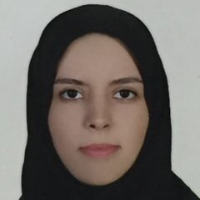Organizational Network Analysis in the Management of Rural Hadi Plan. Case Study: Islamroud Village, Torghabeh-Shandiz County
As the 21st century continues to unfold, the rural developments, life quality, and tackling environmental issues have become a worldwide concern in rural areas. Currently, in Iran, rural settlements are dealing with a variety of problems; one among many is unorganized physical conditions. Thus, rural managers have prepared, enacted, and implemented some developing plans such as the Rural Hadi Plans. These plans are considered as interdisciplinary programs that engage various companies and organizations such as Housing Foundation of Islamic Revolution, Provincial Government, Jihad Agriculture Organization, Rural Municipality, Department of Environment, etc. The complexity of this program emphasizes on demand for analyzing the relationships of among the abovementioned organizations in a more elaborated way, so as to help the managers to improve their relationships with other organizations and enhance their collaboration in order to reduce their possible conflicts. Hence, the principal aim of this study is to investigate the relationships between among the organizations related to the Islamroud Rural Hadi Plan.
Considering the Islamroud village as the case study, in order to achieve the aim of this study, data was collected through library resources and documentary research. In addition, Social Network Analysis was applied as an effective method to evaluate organizational relationships. In this study, the network data was collected through a snowball sampling that it led to identify identification of 20 different organizations as focal organizations in Islamroud Rural Hadi Plan. In addition, some semi-structured interviews were conducted, and a specific questionnaire was designed based on the Likert scale (zero, very low, low, moderate, high, and very high) to report the intensity of relations. Besides, a part of the questionnaire investigated the collaborating and conflicting relationships that are filled by associated experts in 20 different organizations. Furthermore, UCINET and NETDRAW software were used to analyze the network measures and visualize the organizational relationships graph.
By analyzing network cohesion, the density of the whole network in communication relationships was %34.5, which is considered as the a low or relatively moderate amount. Also, the amount of in-degree centralization and out-degree centralization were %41.3 and %63.4, respectively. It means the lack of homogeneity and organizational cohesion in the network. Based on the results, more than half relationships were related to the core actors indicating their high political power. The amounts of reciprocity and transitivity were %57.8 and %52, respectively, indicating the existence of mediocre stability and balance in the network. Finally, the rate of average geodesic distances was 1.7, explaining the medium rate of communication speed in the organizational network, considering that the optimum amount is 1.5. There are some studies indicating the relation between network cohesion and the rate of plan/project progress. Therefore, based on the assumption, the rate of Islamroud Rural Hadi Plan progress during the defined period of time would be moderate or relatively low, and this statement is in consistency with the table of land uses from 2004 to 2016. Moreover, based on core/periphery result, many relations were connected to the core actors including Housing Foundation of Islamic Revolution, Provincial Government, County Office, Rural Municipality, Islamic Rural Council, Jihad Agriculture Organization, and Rural Water and Wastewater Company in which the density of core network was %80.4. Also, the results of centrality measures including In-degree/Out-degree centrality, Betweenness centrality, Eigenvector centrality, and Beta centrality showed that Housing Foundation of Islamic Revolution, Provincial Government, Rural Municipality, County Office, Governorate, Islamic Rural Council, Rural Water and Wastewater Company, and Jihad Agriculture Organization were the key stakeholders in the network. These organizations play a pivotal role in the preparation, enactment, and implementation of Rural Hadi Plan, and these findings are close to the core/periphery result. Finally, the analysis of collaborative and conflictive relationships indicated that the high rate of conflicting relationships regarding the Planning and Budget Organization is because of the low allocated budget to related organizations.
This study is conducted to analyze the structure of network relationships between the organizations interacting in the Rural Hadi Plan. The results demonstrate the mediocre or relatively low organizational cohesion, stability, and network balance that it can be improved with by increasing the level of relationships among periphery organizations. In other words, improving the relationships among the periphery organizations, rises the size and the density of the network and reduces the rate of centralization and thus enhancing enhances the level of organizational cohesion. Additionally, the centrality analysis determines the key actors (organizations) in 3 different sections of the Rural Hadi Plan (preparation, enactment, and implementation). The centrality analysis can help decision-makers to enact effective policies in order to increase the role of other organizations and effectively allocate the budget or additional resources.
- حق عضویت دریافتی صرف حمایت از نشریات عضو و نگهداری، تکمیل و توسعه مگیران میشود.
- پرداخت حق اشتراک و دانلود مقالات اجازه بازنشر آن در سایر رسانههای چاپی و دیجیتال را به کاربر نمیدهد.




